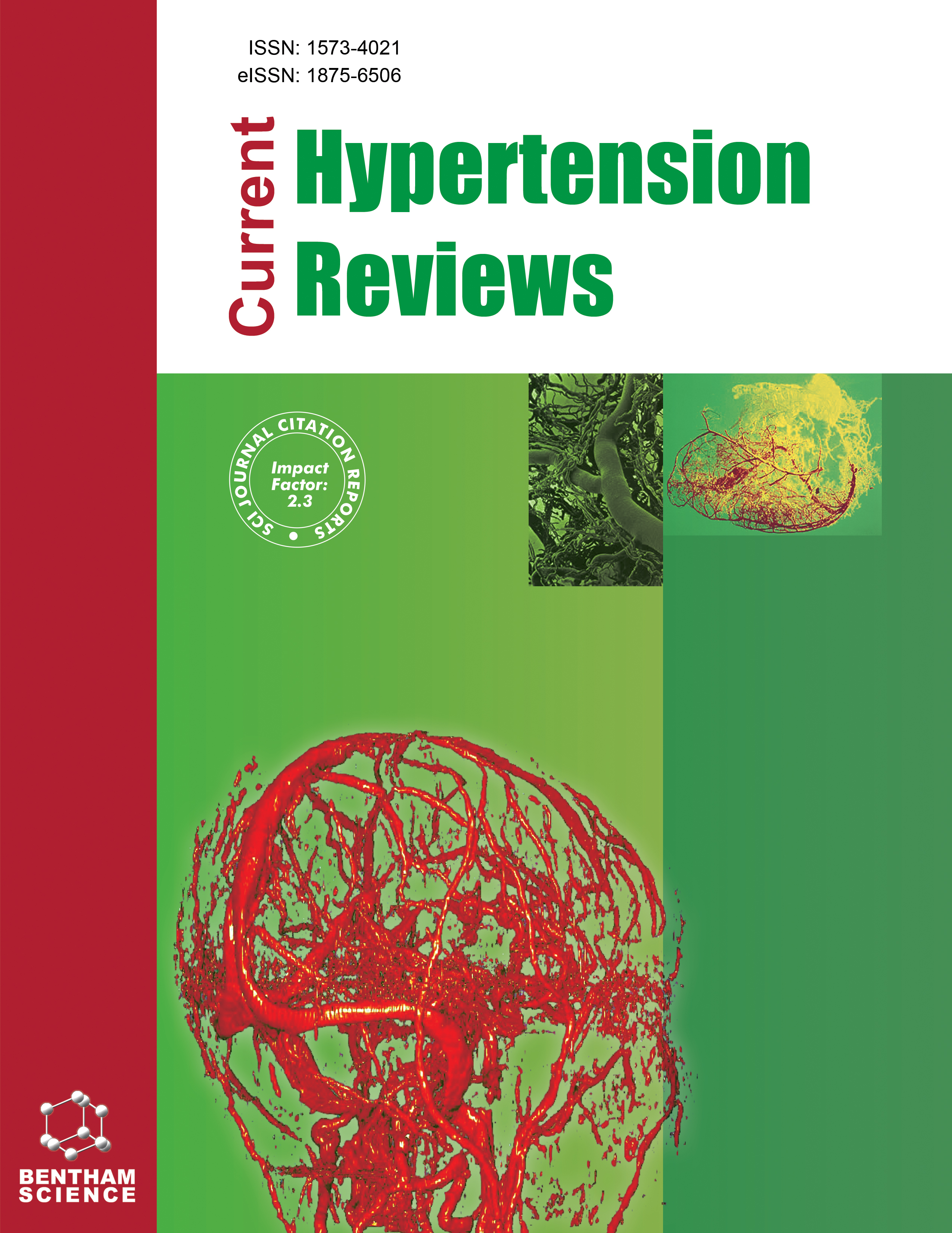- Home
- A-Z Publications
- Current Hypertension Reviews
- Previous Issues
- Volume 12, Issue 1, 2016
Current Hypertension Reviews - Volume 12, Issue 1, 2016
Volume 12, Issue 1, 2016
-
-
The Epidemiology of Sleep Disordered Breathing and Hypertension in Various Populations
More LessAuthors: Hiroyuki Sawatari, Akiko Chishaki and Shin-ich AndoHypertension is prevalent in patients with sleep disordered breathing (SDB). Since hypertension significantly relates to cardiovascular diseases, the treatment and prevention of SDB could be targets for the prevention of cardiovascular diseases. In this article, we summarize about epidemiology of SDB and hypertension in various populations. General population based studies on the prevalence of SDB reported that 24 to 47% ma Read More
-
-
-
Sympathetic Nervous System in Patients with Sleep Related Breathing Disorders
More LessAcute and sustained activation of the sympathetic nervous system are clinical hallmarks of both obstructive and central sleep apnea. Conversely, their treatment has been shown to reverse these abnormalities. The objectives of this brief review are to summarize: 1) present knowledge concerning the mechanisms, magnitude and consequences of night- and day-time sympathetic nervous system activation in patients wit Read More
-
-
-
Development of a Triggered Nocturnal Blood Pressure Monitoring which Detects Nighttime Blood Pressure Surges in Sleep Apnea Syndrome
More LessAuthors: Mitsuo Kuwabara and Kazuomi KarioObstructive sleep apnea (OSA) places an enormous pressure load on the cardiovascular system by inducing a temporary blood pressure (BP) surge during apnea episodes. This pressure load is regarded as a potential mechanism of development of cardiovascular diseases such as stroke. Therefore, accurate measurement of such BP surges would be valuable for the risk stratification of OSA patients. Recently we develope Read More
-
-
-
Fluid Retention and Rostral Fluid Shift in Sleep-Disordered Breathing
More LessSleep-disordered breathing (SDB) is common and adversely affects cardiovascular morbidity and mortality. Despite multifactorial pathogenesis, SDB is prevalent in patients with fluid retention disorders, such as drug-resistant hypertension, end-stage renal disease, and heart failure, suggesting that fluid retention may play a role in the pathogenesis of SDB. During the day, fluid is likely to accumulate in the legs, and u Read More
-
-
-
Chronic Kidney Disease and Sleeping Disordered Breathing (SDB)
More LessAuthors: Roberto Sávio Silva Santos, Shveta S. Motwani and Rosilene Motta EliasThe outlines of the current manuscript are: 1. Re-establish the link between hypertension and SDB including prevalence, mechanism, and reversal of process (i.e. improvement in hypertension with improvement in SDB), why it is important-cardiovascular mortality with numbers. 2. Re-establish the link between hypertension and CKD including same points as above. Then ask if both CKD and SDB are combined, what happens to Read More
-
-
-
New Technologies for the Diagnosis of Sleep Apnea
More LessSleep Apnea is a very common condition that has serious cardiovascular sequelae such as hypertension, heart failure, and stroke. Since the advent of modern computers and digital circuits, several streams of new technologies have been introduced to enhance the traditional diagnostic method of polysomnography and offer alternatives that are more accessible, comfortable, and economic. The categories presented in this revie Read More
-
-
-
Vascular Endothelial Primary Cilia: Mechanosensation and Hypertension
More LessPrimary cilia are sensory organelles that extend from the cell surface and sense extracellular signals. Endothelial primary cilia protruding from the inner surface of blood vessel walls sense changes in blood flow and convert this mechanosensation into an intracellular biochemical/molecular signal, which triggers a cellular response. Primary endothelial cilia dysfunction may contribute to the impairment of this response and th Read More
-
-
-
Revision on Renal Sympathetic Ablation in the Treatment of Resistant Hypertension
More LessIntroduction: Hypertension is one of the most prevalent diseases in the world, with about 1 billion people affected and a possible increase to 1.5 billion by 2025. Despite advances in treatment, a proportion of patients remain resistant to conventional treatment and uncontrolled, and this can adversely affect future cardiovascular events and mortality. This alarming growth is already reflected in an important public health probl Read More
-
Volumes & issues
-
Volume 21 (2025)
-
Volume 20 (2024)
-
Volume 19 (2023)
-
Volume 18 (2022)
-
Volume 17 (2021)
-
Volume 16 (2020)
-
Volume 15 (2019)
-
Volume 14 (2018)
-
Volume 13 (2017)
-
Volume 12 (2016)
-
Volume 11 (2015)
-
Volume 10 (2014)
-
Volume 9 (2013)
-
Volume 8 (2012)
-
Volume 7 (2011)
-
Volume 6 (2010)
-
Volume 5 (2009)
-
Volume 4 (2008)
-
Volume 3 (2007)
-
Volume 2 (2006)
-
Volume 1 (2005)
Most Read This Month
Article
content/journals/chyr
Journal
10
5
false
en


